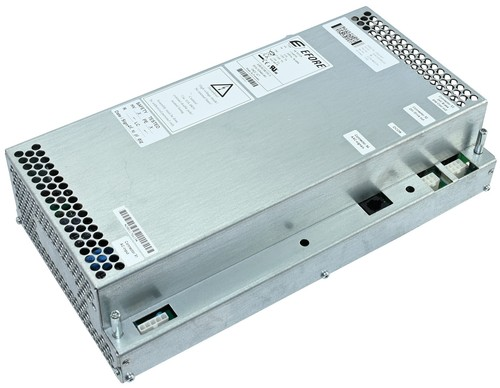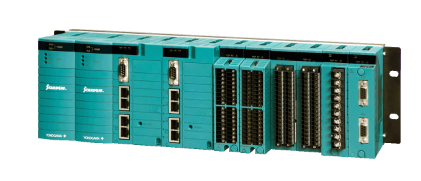ABB DSQC627 3HAC020466-001 is an advanced power supply module designed specifically for industrial robot systems. It belongs to the core power supply component series of ABB robot control systems and focuses on high stability and reliability multi circuit power output. It adopts modular and redundant design, which can be seamlessly integrated into ABB IRC5 and IRC5 Compact robot controllers, providing precise and stable DC power supply for core equipment such as robot body, end effector, I/O module, etc. With wide input adaptation, multiple protection mechanisms, and efficient power conversion, it has become a key power supply guarantee unit for high-precision robot operation scenarios such as automotive manufacturing and electronic assembly.
ABB DSQC627 3HAC020466-001 Advanced Power Supply Module
Product Overview
ABB DSQC627 3HAC020466-001 is an advanced power supply module designed specifically for industrial robot systems. It belongs to the core power supply component series of ABB robot control systems and focuses on high stability and reliability multi circuit power output. It adopts modular and redundant design, which can be seamlessly integrated into ABB IRC5 and IRC5 Compact robot controllers, providing precise and stable DC power supply for core equipment such as robot body, end effector, I/O module, etc. With wide input adaptation, multiple protection mechanisms, and efficient power conversion, it has become a key power supply guarantee unit for high-precision robot operation scenarios such as automotive manufacturing and electronic assembly.
Specification parameters
1. Core power supply parameters
Input voltage range
Communication input: 100-240V AC (50/60Hz), wide range compatible with global industrial power grids
Output circuit configuration
3 independent DC outputs: - Main circuit: 24V DC/10A (robot controller core power supply) - Auxiliary circuit: 1:24V DC/5A (I/O module power supply) - Auxiliary circuit: 2:12V DC/3A (sensor and end effector power supply)
Voltage stability accuracy
Output voltage ripple ≤ 50mV (full load state), voltage regulation accuracy ± 1% FS
Electric energy conversion efficiency
Efficiency under typical load ≥ 92%, full load efficiency ≥ 89%
2. Hardware and environmental parameters
Protection function
Equipped with overvoltage protection (OVP), overcurrent protection (OCP), short circuit protection (SCP), and over temperature protection (OTP), the protection threshold can be fine tuned through software
Monitoring interface
1 × RS-485 communication interface (supporting Modbus RTU protocol), capable of uploading real-time data such as output voltage, current, temperature, etc. to the controller
Environmental tolerance
Working temperature: 0 ° C to 55 ° C, storage temperature: -40 ° C to 85 ° C, relative humidity: 5% -95% (no condensation), protection level: IP20
Physical specifications
Size 180 × 120 × 60mm, weight 0.8kg, supports DIN rail installation, compatible with ABB IRC5 control cabinet standard installation position
3. Certification and compatibility
Certification: CE (EN 61204-3), UL 60950-1 safety certification, compliant with IEC 61000-6-2 industrial electromagnetic compatibility standard
System compatibility: Designed specifically for ABB IRC5 robot control system, compatible with DSQC series I/O modules, robot servo drives, and supports RobotWare 6.0 and above power management function
Performance characteristics
Multi loop precise power supply: adopting a three channel independent output design, providing customized voltage and current for the main control system, I/O devices, and end actuators respectively, to avoid single loop faults affecting the overall system. The voltage stability accuracy reaches ± 1%, ensuring the stable operation of precision equipment such as robot servo motors and sensors.
Wide input and efficient conversion: 100-240V AC wide input is suitable for different industrial power grids around the world, without the need for additional transformers; Based on LLC resonant topology design, the energy conversion efficiency can reach up to 92%, reducing energy consumption by 30% compared to traditional linear power sources and reducing control cabinet heat dissipation pressure.
Multiple Redundancy and Protection: Built in dual input rectifier redundancy circuit, can automatically switch to the backup circuit when a single rectifier unit fails, with a power supply continuity of 99.99%; Combined with multiple layers of protection such as overvoltage, overcurrent, and overtemperature, it can quickly respond to abnormalities such as short circuits and overloads, avoiding damage to modules and downstream equipment.
Intelligent monitoring and diagnosis: Real time uploading of power supply parameters through RS-485 interface, supporting remote monitoring of output status by the controller; The built-in fault memory function can store nearly 50 fault records (including fault type, occurrence time, and current parameters), which can be exported with one click through the upper computer software for easy fault tracing and preventive maintenance.
Optimization of Robot System Adaptation: Based on the instantaneous power consumption characteristics of ABB robot servo system, a 200ms peak current carrying capacity is designed (the peak current of the main circuit can reach 15A) to meet the instantaneous power supply requirements of the robot during high-speed motion; In deep collaboration with the RobotWare system, the output power can be automatically adjusted according to the robot's working mode, reducing standby energy consumption.
Precautions
1. Installation specifications
It must be installed in the designated position of the ABB IRC5 control cabinet or in an independent cabinet that meets the heat dissipation requirements. When installing the DIN rail, it is necessary to ensure that the distance between the module and the surrounding equipment is ≥ 50mm to avoid blocking the heat dissipation holes; The control cabinet needs to be equipped with a forced air cooling fan (wind speed ≥ 1m/s) to prevent module overheating.
The input and output wiring should distinguish between strong current and signal lines. The input power line should use copper core wire with an area of 2.5mm ² or more, and the output line should be selected according to the circuit current: the main circuit should be ≥ 4mm ², and the auxiliary circuit should be ≥ 2.5mm ²; The RS-485 communication line adopts shielded twisted pair cables, with the shielding layer grounded at one end and a distance of ≥ 30cm from the power line
2. Operation and maintenance
Before the first power on, the protection threshold (such as overvoltage protection set to 26.4V) needs to be configured through RobotWare software to calibrate the voltage sampling accuracy; When starting, the input power needs to be connected first. After the module indicator light shows "normal" (green constantly on), the downstream device power can be turned on.
View real-time data (output voltage, current, temperature) of the power module through the controller every month, and clean the surface dust and heat dissipation holes of the module every quarter; Conduct a full load test once a year to verify the effectiveness of protection functions, check the tightness of wiring terminals, and avoid heating caused by poor contact.
3. Safety protection
Before installation and maintenance, the input power must be cut off, and the internal capacitors of the module must be fully discharged (at least 10 minutes). After confirming that there is no voltage at the output terminal with a multimeter, the operation can be carried out; It is strictly prohibited to plug or unplug wiring terminals while the module is live to prevent arc burns or equipment damage.
If the module triggers over temperature protection (the indicator light flashes red), it is necessary to first troubleshoot the heat dissipation problem (such as the fan stopping or dust blocking), and then restart after the temperature drops below 45 ° C; When replacing modules, it is necessary to choose the same model 3HAC020466-001. It is strictly prohibited to mix other models of power modules to avoid compatibility issues.

- User name Member Level Quantity Specification Purchase Date
- Satisfaction :
-









Email:wang@kongjiangauto.com




































































































































